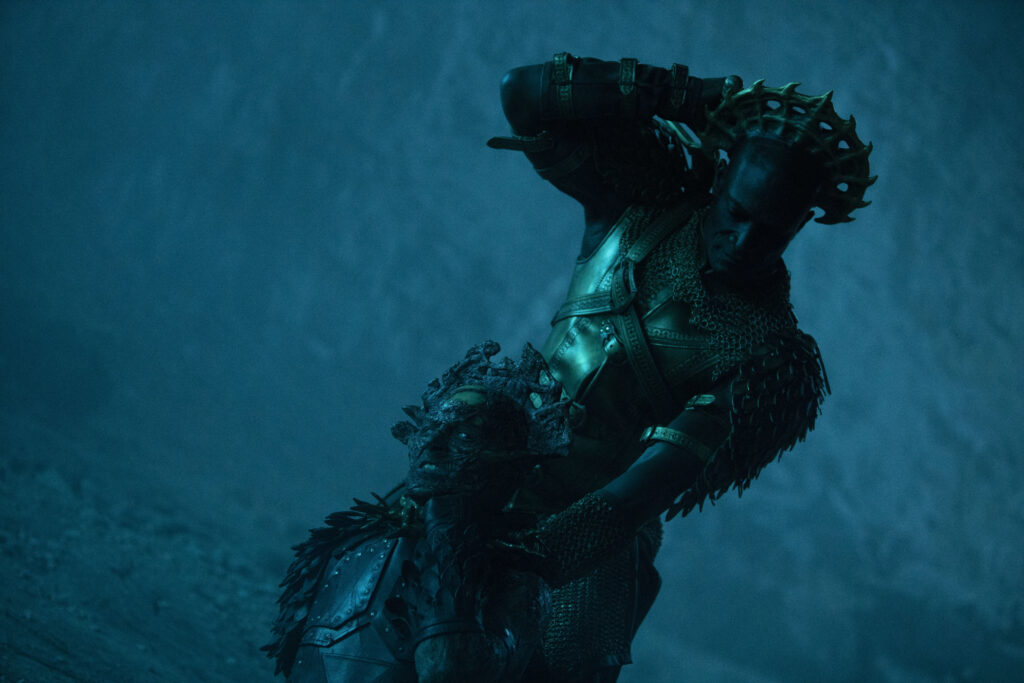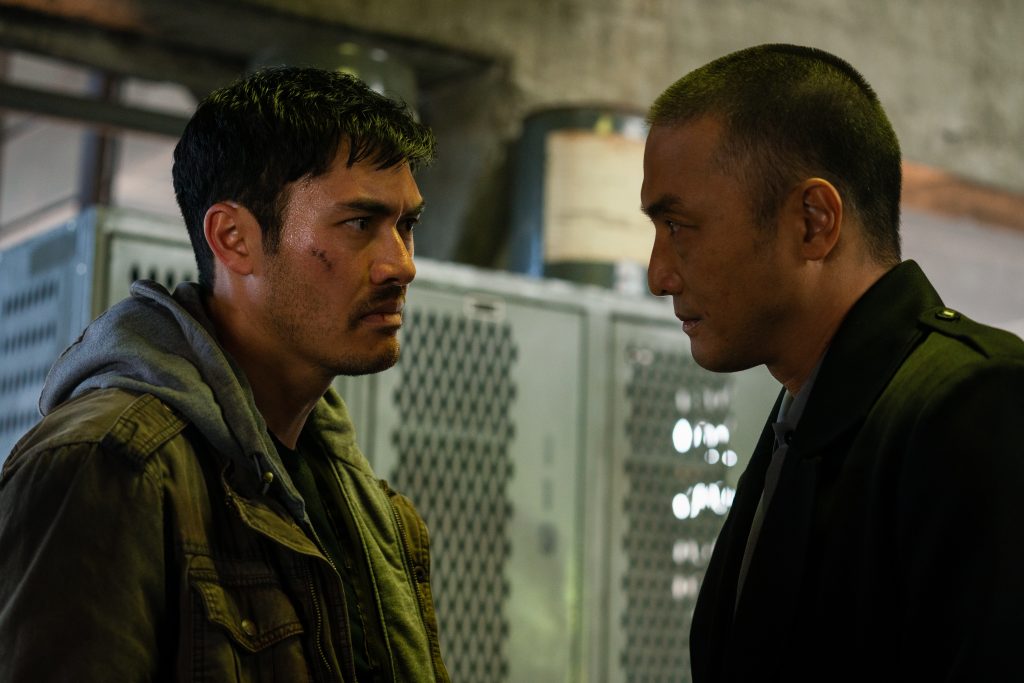March 26, 2023
by Carla Hay

Directed by Nathan Frankowski
Some language in Italian with no subtitles
Culture Representation: Taking place in Italy, the horror film “The Devil Conspiracy” features a predominantly white cast of characters (with a few black people) representing the working-class, middle-class and wealthy.
Culture Clash: An art historian uncovers a sinister biogenetics plot conjured up by Satanists, while the evil angel Lucifer plots his revenge on good archangel Michael.
Culture Audience: “The Devil Conspiracy” will appeal primarily to people who are interested in watching idiotic horror movies that are a mishmash of other movies’ concepts that use characters from Christian teachings.

“The Devil Conspiracy” is a bombastic train wreck of a horror movie with an onslaught of bad acting and stupid scenarios. It’s a weak ripoff of ideas from Rosemary’s Baby and Legion, but with the setting in Italy, instead of New York City or Los Angeles. The movie tries to juggle two different stories that are supposed to be connected. The ends result is that “The Devil Conspiracy” doesn’t succeed at telling either story and is just a jumbled mess.
Directed by Nathan Frankowski and written by Ed Alan, “The Devil Conspiracy” shows the first story, which is a battle between the evil angel Lucifer (played by Joe Anderson) and the good archangel Michael (played by Peter Mensah), with Lucifer losing the battle. Lucifer falls from the sky. Michael then puts Lucifer in chains and says that Lucifer will be set free if Lucifer joins Michael as an ally. Lucifer refuses and says he will return as Michael’s master. legions of demons join Lucifer in hell as Lucifer plots his revenge.
“The Devil Conspiracy” then ignores this Lucifer/Michael feud for most of the movie until the last third of the film. The second story is about an art historian named Laura Milton (played by Alice Orr-Ewing), an American. She is spending a lot of time at a museum that has a very special exhibition: the shroud of Jesus Christ, also known as the Shroud of Turin. This shroud has a major role in a poorly conceived biogenetics plot development that is revealed later in the movie.
Before she goes to the museum to see this shroud, Laura meets Dr. Andre Russo (played by Andrea Scarduzio) from Turin University, and she has an awkward conversation with him. Laura pleads with Dr. Russo to reconsider her thesis. He replies, “The last thing Turin University wants to hear is a young American lecturing us on what our great Italian artists believed or didn’t believe.”
Laura then says she doesn’t believe in angels or a dark side of the afterlife. Dr. Russo says they can continue this discussion at his apartment. Laura knows exactly what he means by this invitation. And she wisely declines. It’s probably one of the few smart decisions that Laura makes, because this character is the unflattering stereotype of a horror heroine who makes some very bad decisions.
At the museum, which is crowded with people eager to see the Shroud of Turin, Laura doesn’t have a ticket, but she gets a laminated pass from a priest she knows as a professional acquaintance: Father Marconi (played by Joe Doyle), who won’t be himself for much longer. Through a series of circumstances, something happens that is already revealed in “The Devil Conspiracy” trailer: Father Marconi is murdered in the museum. Archangel Michael then immediately comes down to Earth and inhabits Father Marconi’s body, which is brought back to life with the spirit of Michael inside.
“The Devil Conspiracy” then wastes a lot of time with repetitive scenes of Laura lurking around the museum after it’s closed and seeing strange things that might look scary to her, but actually look like cheap-looking horror movie tactics. A witchy-looking woman named Liz (played by Eveline Hall) shows up occasionally, with and without some cronies, to cause some murders and other mayhem. Laura is then kidnapped and put in a glass cage in a room with three other young women who are also in glass cages: hysterical Sophia (played by Wendy Rosas), tough-looking Alina (played by Natalia Germani) and sensible Brenda (played by Victoria Chilap).
The rest of “The Devil Conspiracy” then becomes a tangled mishmash of science fiction and demonic possession that is so ridiculous and poorly explained, even the characters in the movie who are supposed to believe in what’s happening never look convinced. These characters include Dr. Laurent (played by Brian Caspe) and Cardinal Vincinia (played by James Faulkner), representing the inept way that “The Devil Conspiracy” tries to present conflicts between science and religion. The movie is also plagued with tacky-looking visual effects that are more laughable than terrifying. The film editing is atrocious and just makes the entire movie look even more scatterbrained than it already is.
And some of the soundtrack music is enough to make a viewer’s eyes roll with the corniness of it all. For example, there’s a scene where archangel Michael, while inhabiting the body of the dead Father Marconi, is listening to some songs while driving a car. The songs are INXS’s 1987 classic “Devil Inside” and Real Life’s 1983’s hit “Send Me an Angel.” Yes, really.
One of the worst things about “The Devil Conspiracy” is the very incoherent showdown scene that’s supposed to be the big climax to the movie. Apparently, “The Devil Conspiracy” filmmakers haven’t learned that throwing a bunch of low-quality visual effects into darkly lit scenes does not automatically make a movie thrilling to watch. By the end of “The Devil Conspiracy,” viewers will feel that the only convincing hell that this movie was able to conjure up was the hell of having wasted time watching this junk.
Samuel Goldwyn Films released “The Devil Conspiracy” in U.S. cinemas on January 13, 2023. The movie was released on digital and VOD on March 3, 2023.


